The Papua New Guinea flag vividly portrays the nation’s dynamic culture and intimate bond with nature. It encapsulates the essence of the country’s diverse landscapes and tradition and reflects the resilience and distinctive spirit of Papua New Guinea, resonating deeply with its people and highlighting their commitment to progress and cultural richness.
Flag of Papua New Guinea
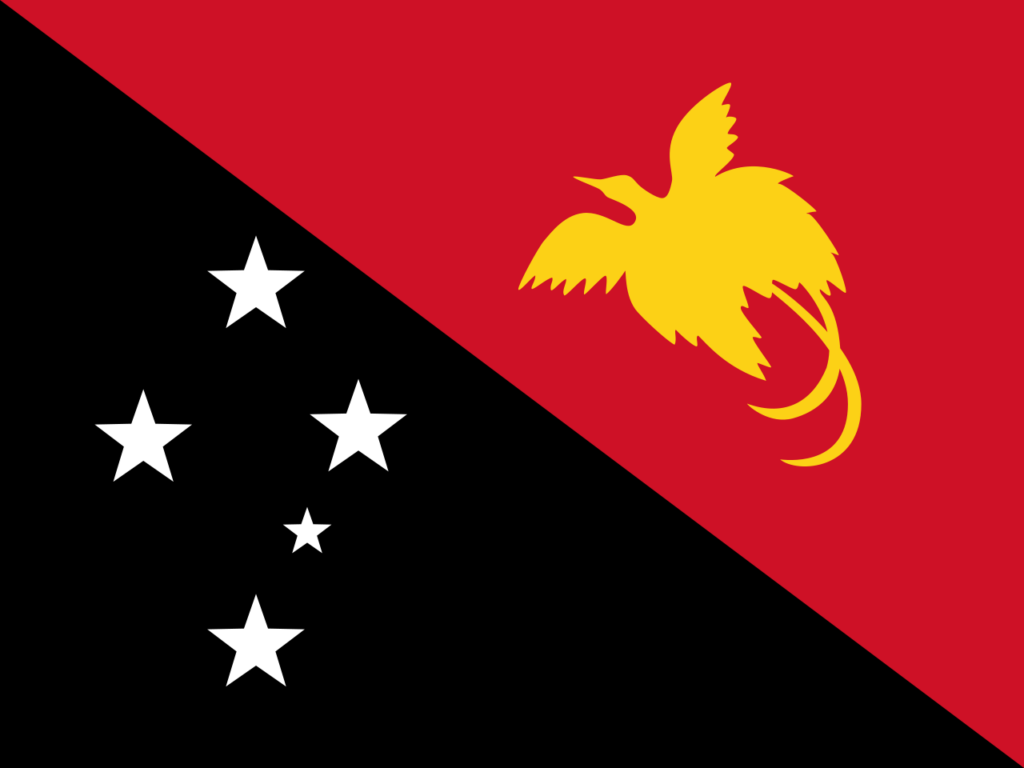
The flag of Papua New Guinea presents a unique and symbolic design, featuring a diagonal division that creates two distinct triangles. The upper section showcases the Raggiana bird-of-paradise in a poised and dynamic pose, representing freedom and the nation’s rich natural environment.
The lower section is adorned with the Southern Cross constellation, a symbol deeply significant in Pacific culture, highlighting Papua New Guinea’s connection to the South Pacific region and elegantly merges elements of the nation’s diverse natural wonders with its celestial ties.
Flag of Papua New Guinea: Color Palette
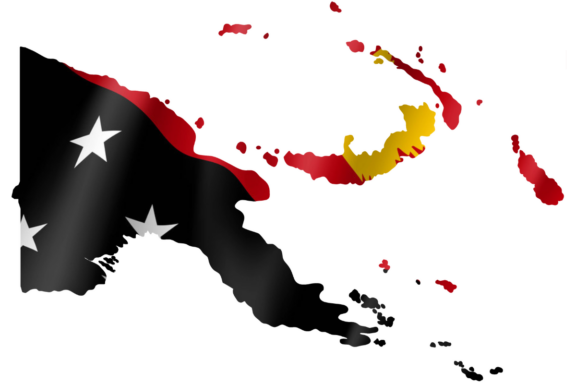
Papua New Guinea Emoji: 🇵🇬
The color palette of the Papua New Guinea flag was chosen to represent key aspects of the nation’s identity and environment. Each color plays a significant role in conveying the rich culture and nature of Papua New Guinea, creating a visual language that speaks to the nation’s heart.
Meaning of Each Color
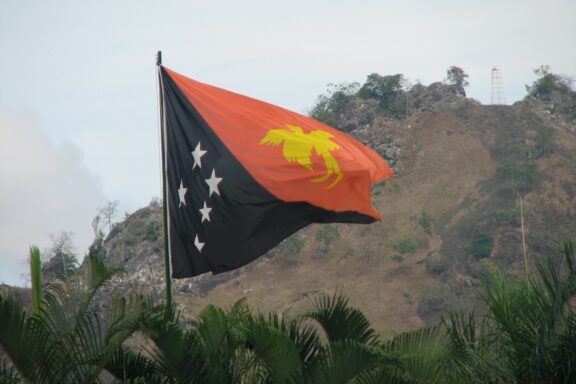
Red
The color red in the Papua New Guinea flag deeply connects to the nation’s unique culture. It has been a traditional color used in many local tribes’ artwork for centuries. This hue symbolizes the country’s vitality and prosperous past, reflecting a continuum from the past into the future.
Black
Black is prominently featured in the flag and represents the Melanesian majority of Papua New Guinea’s population. It pays homage to their unique cultural fabric and acknowledges this community’s significant role in shaping the nation.
White
White, depicted through the stars of the Southern Cross constellation, carries connotations of purity and friendship. These stars are important for traditional navigation and hold agricultural significance, marking vital planting and harvesting seasons.
Therefore, white symbolizes a blend of practical knowledge, purity of intent, and the aspiration for harmony and peaceful coexistence.
Yellow
The yellow Raggiana bird-of-paradise symbolizes the emergence of Papua New Guinea into nationhood. It represents the country’s abundant natural beauty and biodiversity.
In this context, Yellow is a celebration of the nation’s vibrant environment and a nod to its unique place in the world’s ecological mosaic.
Papua New Guinea Coat of Arms
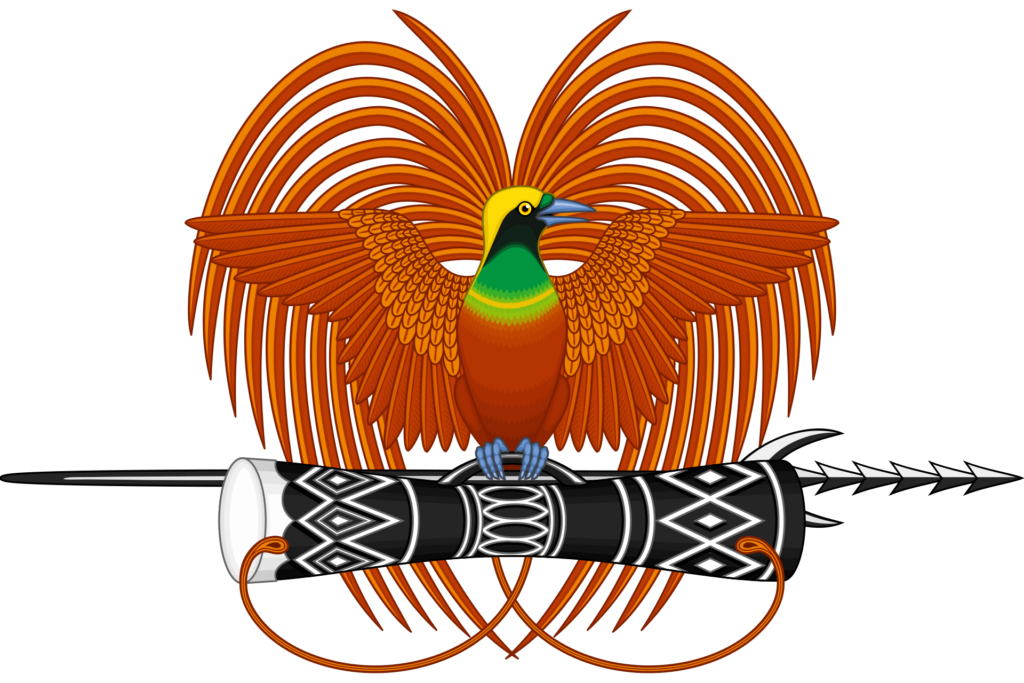
The Coat of Arms of Papua New Guinea, adopted on July 1, 1971, is a heraldic representation that carries deep significance through its national symbols:
- Raggiana Bird-of-Paradise: The bird is perched upon a traditional spear and Kundu drum, symbolizing the unique fauna of Papua New Guinea, its vibrant culture, and the integration of nature with cultural expressions.
- Spear and Kundu Drum: These elements are emblematic of the country’s rich tradition in the arts and are instrumental in ceremonies and performances, reflecting the deep-rooted cultural heritage of the nation.
- Motto: “Unity in Diversity” is the nation’s guiding principle, inscribed below the shield, which celebrates the harmonious coexistence of Papua New Guinea’s many ethnic groups and cultures.
The Coat of Arms represents a proud emblem that merges key aspects of the nation’s identity, highlighting its respect for traditions, the natural environment, and the collective aspirations of its people.
Historical Evolution and the Meaning Behind Changes
The flag of Papua New Guinea has undergone a significant evolution, reflecting the country’s path from colonial rule to independent nationhood.
During the German and later Australian colonial periods, flags representing these powers were used, incorporating symbols and colors typical of foreign influence.
The transition to a flag truly representative of Papua New Guinea began with an Australian proposal featuring a design that attempted to symbolize various aspects of the nation. However, this design did not resonate with the local populace.
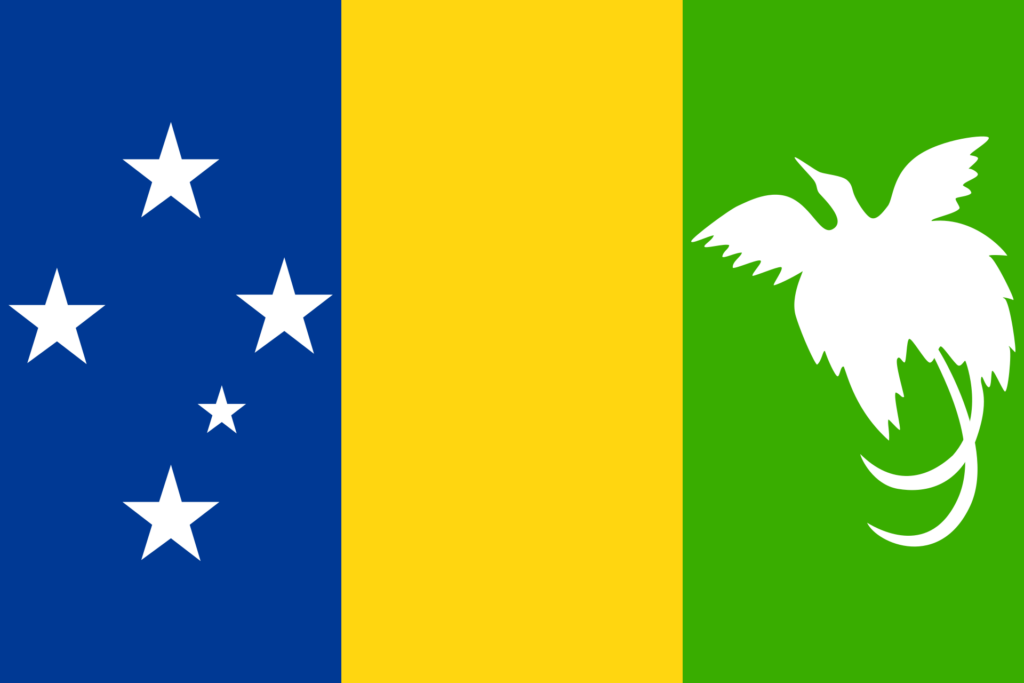
A nationwide competition in 1971 led to the adoption of the current flag in a pivotal move towards self-representation. Designed by Susan Karike, a 15-year-old local girl, the new flag marked a departure from colonial symbols to ones that resonated with the nation and its heritage.
This change in the flag’s design symbolized a significant shift towards embracing the country’s unique culture and natural environment. The current flag, devoid of colonial emblems, symbolizes Papua New Guinea’s independent spirit, cultural richness, and place within the Pacific community.
Overall Symbolic Meaning of the Flag
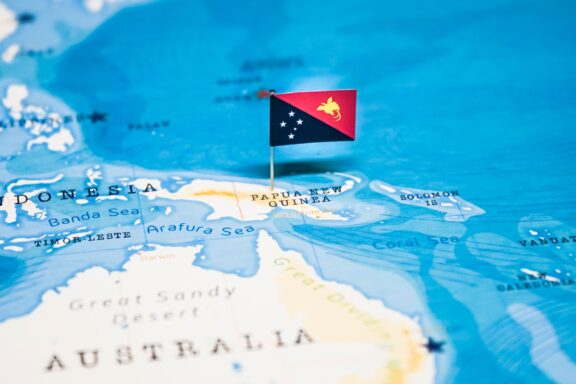
The flag of Papua New Guinea stands as a powerful emblem that embodies its journey from a past rich in tradition to a future filled with promise and potential. It merges elements that honor the nation’s diversity, the resilience of its people, and their connection to the land and its natural wonders.
Similar Flags to the Flag of Papua New Guinea
The flag of Papua New Guinea shares similarities with the flags of several other countries, each for different reasons:
Solomon Islands
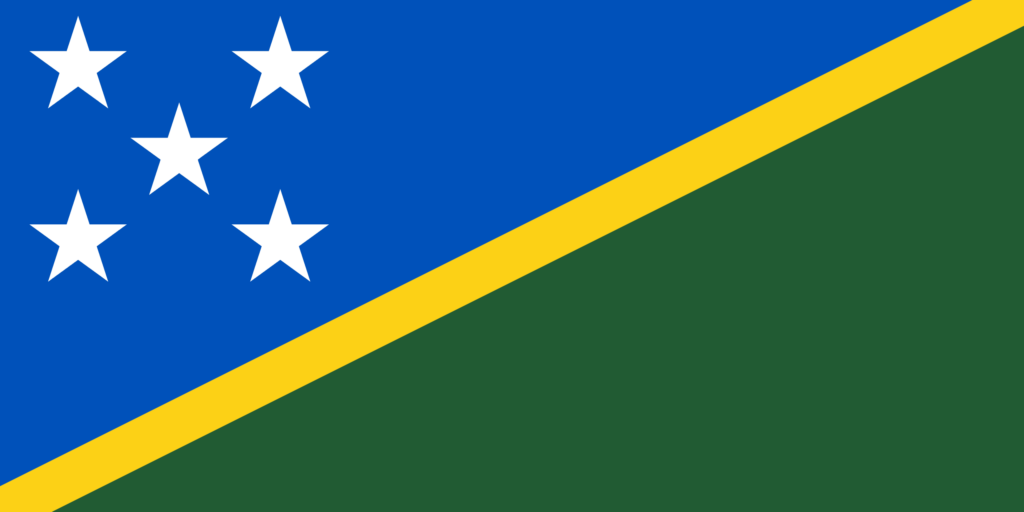
The similarity of the Solomon Islands flag with Papua New Guinea’s flag comes from the shared geographical and cultural context of being Pacific Island nations.
Both flags embody elements significant to the region, such as the representation of natural features and the use of vibrant colors, which are common in the artistic expressions of Pacific Island cultures.
East Timor (Timor-Leste)

The similarity here lies in the thematic use of colors and symbols representing broader concepts like freedom, navigation, and national identity. Like Papua New Guinea, East Timor’s flag uses distinct color contrasts and symbolic imagery to convey its national story and values.
Angola
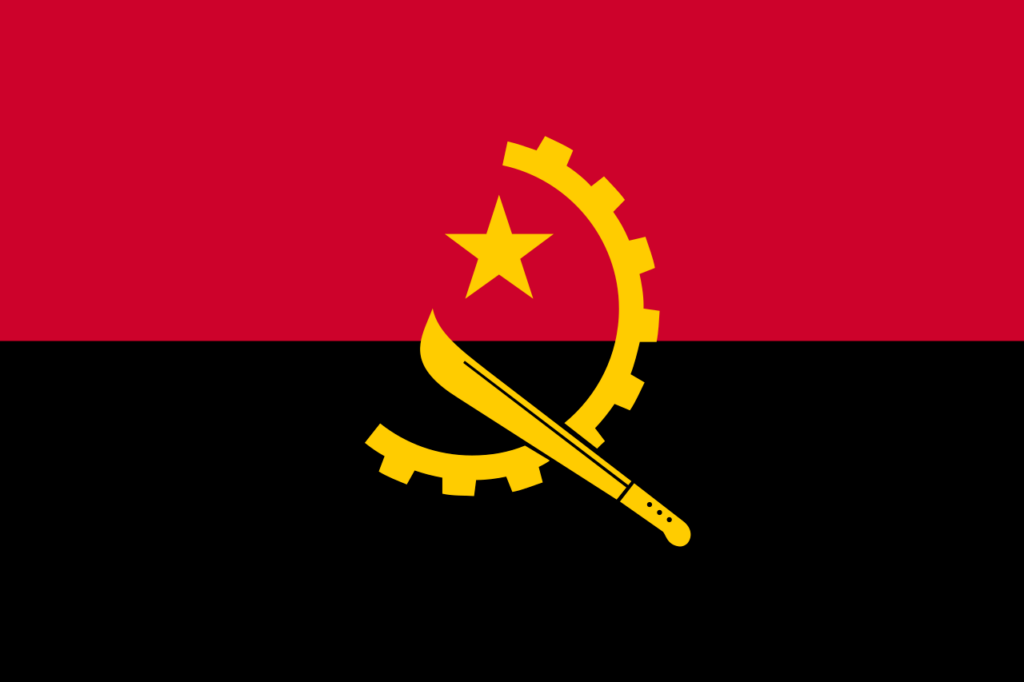
The resemblance to Papua New Guinea’s flag can be attributed to similar colors. In both cases, these colors convey deep cultural and historical narratives.
The commonality in colfor choice in the flag of Angola reflects a broader trend among nations to use bold colors to represent significant aspects of their national identity.
Final Thoughts
The flag of Papua New Guinea stands as a unique symbol in the global array of flags, its design and colors reflecting deep-seated respect for tradition and nature.
For the citizens of Papua New Guinea, it is more than just a national emblem; it’s a source of pride and a reminder of their diverse heritage and the unity that binds them together.
Image Sources and Copyright Information
- Papua New Guinea Flag Against Mountainous Background: © Drew Douglas/Flickr | CC BY-NC 2.0 Generic
- Papua New Guinea Flag Pin on Map: © hyotographics/Shutterstock